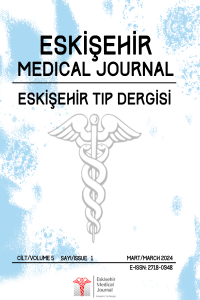Abstract
Primary Sjögren syndrome (pSS) is a systemic autoimmune disorder characterized by the chronic inflammation and dysfunction of exocrine glands, mainly salivary glands, causing dryness of the eyes and the mouth. Patients present with a spectrum of clinical manifestations from sicca (dryness) symptoms to potentially severe extra glandular and/or systemic features, such as inflammatory arthritis, parotitis, interstitial lung disease, neurological dysfunction, cryoglobulinemia, and lymphomas. SS have autoantibodies such as anti-Ro/SSA, anti-La/SSB, antinuclear antibodies (ANA), and rheumatoid factors(RF). These autoantibodies are present in 45% to 75% of patients. Patients fulfilling SS criteria who do not express classic serum antibodies are called patients with seronegative SS. Seronegative SS varies in the literature, ranging from 8% to 37% of SS cohorts. Diagnosing seronegative pSS can be difficult. Without readily detectable serum biomarkers, patients with seronegative SS may be overlooked in the clinic. Here we present 3 cases of seronegative SS with different organ involvement.
Keywords
Abstract
Primary Sjögren syndrome (pSS) is a systemic autoimmune disorder characterized by the chronic inflammation and dysfunction of exocrine glands, mainly salivary glands, causing dryness of the eyes and the mouth. Patients present with a spectrum of clinical manifestations from sicca (dryness) symptoms to potentially severe extra glandular and/or systemic features, such as inflammatory arthritis, parotitis, interstitial lung disease, neurological dysfunction, cryoglobulinemia, and lymphomas. SS have autoantibodies such as anti-Ro/SSA, anti-La/SSB, antinuclear antibodies (ANA), and rheumatoid factors(RF). These autoantibodies are present in 45% to 75% of patients. Patients fulfilling SS criteria who do not express classic serum antibodies are called patients with seronegative SS. Seronegative SS varies in the literature, ranging from 8% to 37% of SS cohorts. Diagnosing seronegative pSS can be difficult. Without readily detectable serum biomarkers, patients with seronegative SS may be overlooked in the clinic. Here we present 3 cases of seronegative SS with different organ involvement.
Keywords
Details
| Primary Language | English |
|---|---|
| Subjects | Rheumatology and Arthritis |
| Journal Section | Letter to the Editor |
| Authors | |
| Early Pub Date | March 28, 2024 |
| Publication Date | March 28, 2024 |
| Submission Date | January 30, 2024 |
| Acceptance Date | February 22, 2024 |
| Published in Issue | Year 2024 Volume: 5 Issue: 1 |



